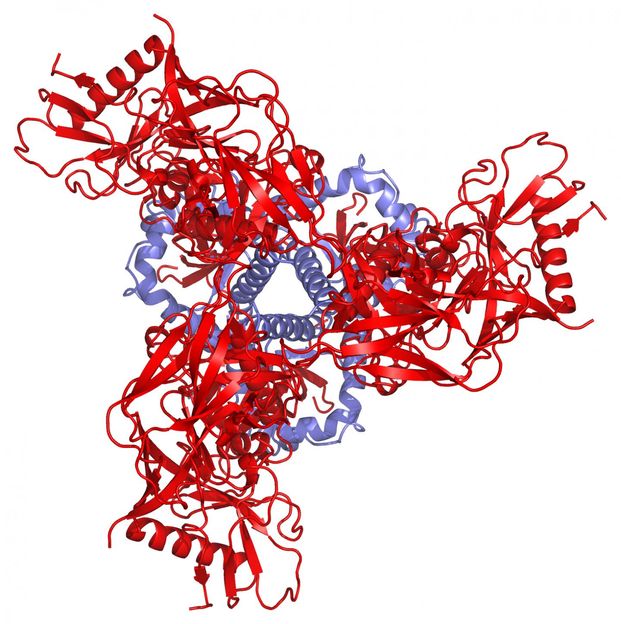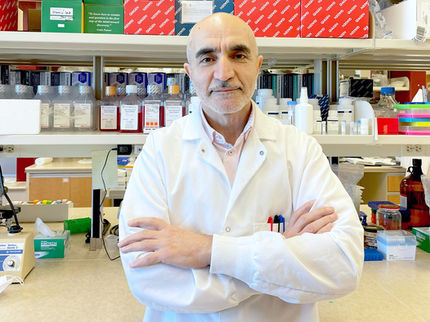Scientists unveil structure, dynamics of key HIV molecules
Findings could aid design of HIV vaccines, treatments
New research has illuminated the movement and complete structure of the spikes on HIV that the virus uses to bind to the cells it infects. This research, led by scientists at the National Institutes of Health, Weill Cornell Medical College and Yale University School of Medicine, could help advance efforts to develop HIV vaccines and treatments.

This schematic depiction of the protein structure of the pre-fusion HIV spike as viewed from above shows the three gp41 molecules in blue and the three gp120 molecules in red.
NIAID
Three sets of a pair of molecules called gp120 and gp41 constitute each HIV spike, which adopts different configurations before and after the virus fuses with a cell. The atomic-level structures ofpre-fusion gp120andpost-fusion gp120and gp41 had been determined previously. After more than a decade of studies, the new research completes the picture by describing the atomic-level structure of the entire pre-fusion gp41. Now it is evident how the whole spike rearranges itself when the virus fuses with a cell, and the ways HIV evades detection by the immune system are clearer.
The researchers also used a sophisticated technique to see how the spike moves before and during cell binding. They found that the unbound spike rapidly shifts among three different configurations. The predominant form, dubbed the closed or ground state and described in the new atomic-level structure, is difficult for the immune system to see, and only broadly neutralizing antibodies bind to it. In this form, the spike attaches well to only one of the two cellular receptors that HIV must bind to fuse with a cell. When broadly neutralizing antibodies and entry-inhibiting drugs bind to HIV, they often stabilize the spike in the ground state and thereby prevent the virus from infecting a cell.
Taken together, the scientists say, the findings indicate that an effective HIV vaccine that teaches the immune system to neutralize the virus should be based on the ground-state, pre-fusion form of the spike. Knowing the atomic structure of that configuration now gives researchers the tools to design and manipulate such a vaccine component.
Most read news
Other news from the department science

Get the life science industry in your inbox
From now on, don't miss a thing: Our newsletter for biotechnology, pharma and life sciences brings you up to date every Tuesday and Thursday. The latest industry news, product highlights and innovations - compact and easy to understand in your inbox. Researched by us so you don't have to.
























































